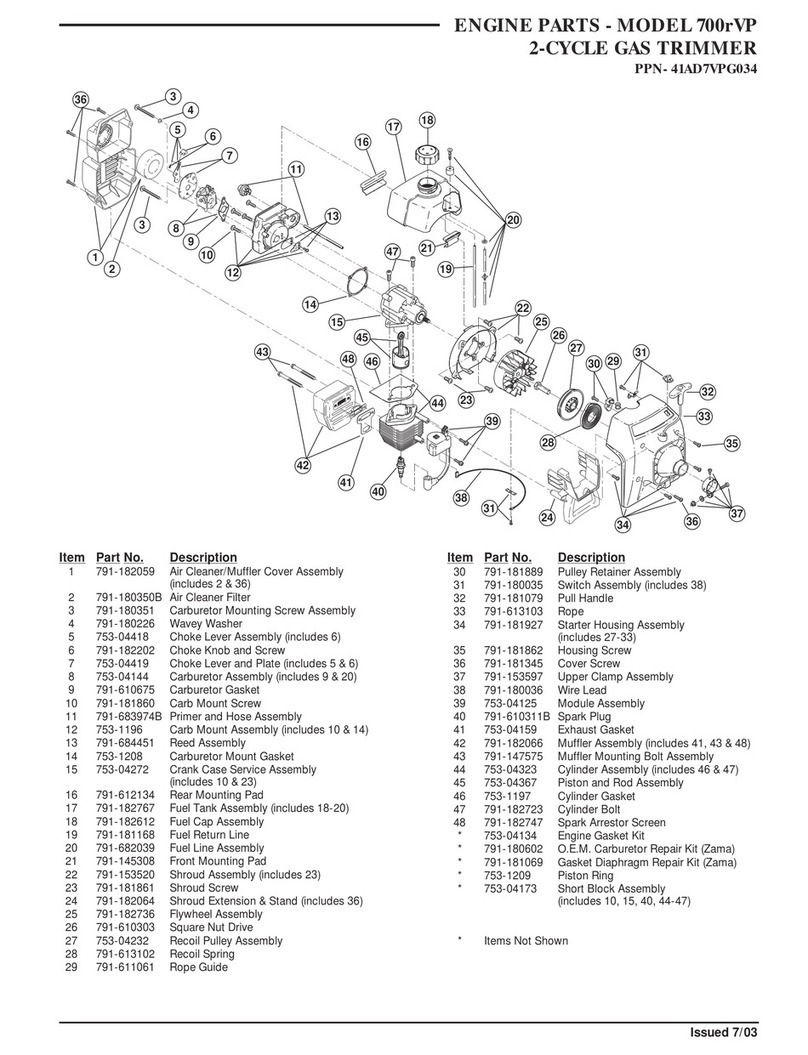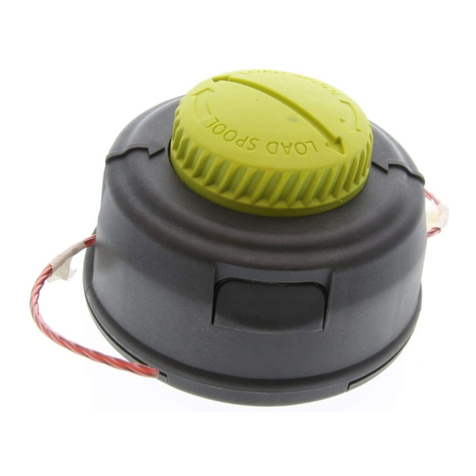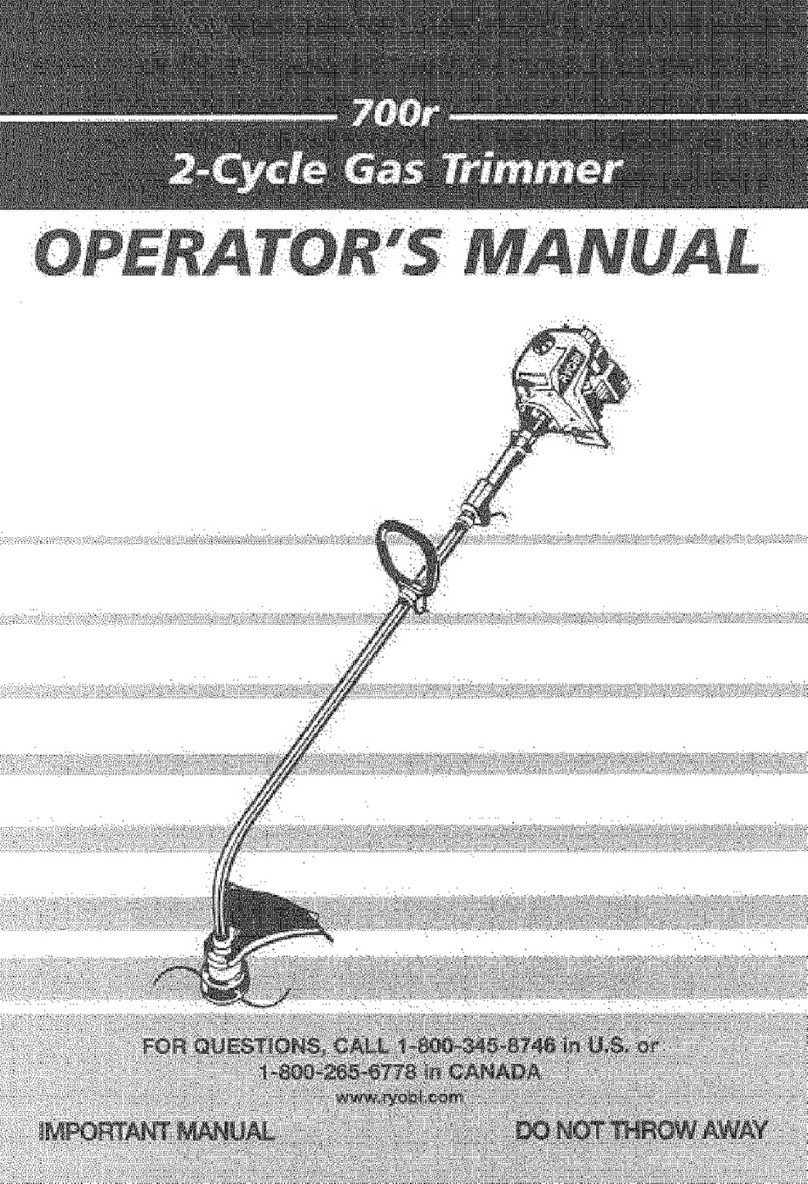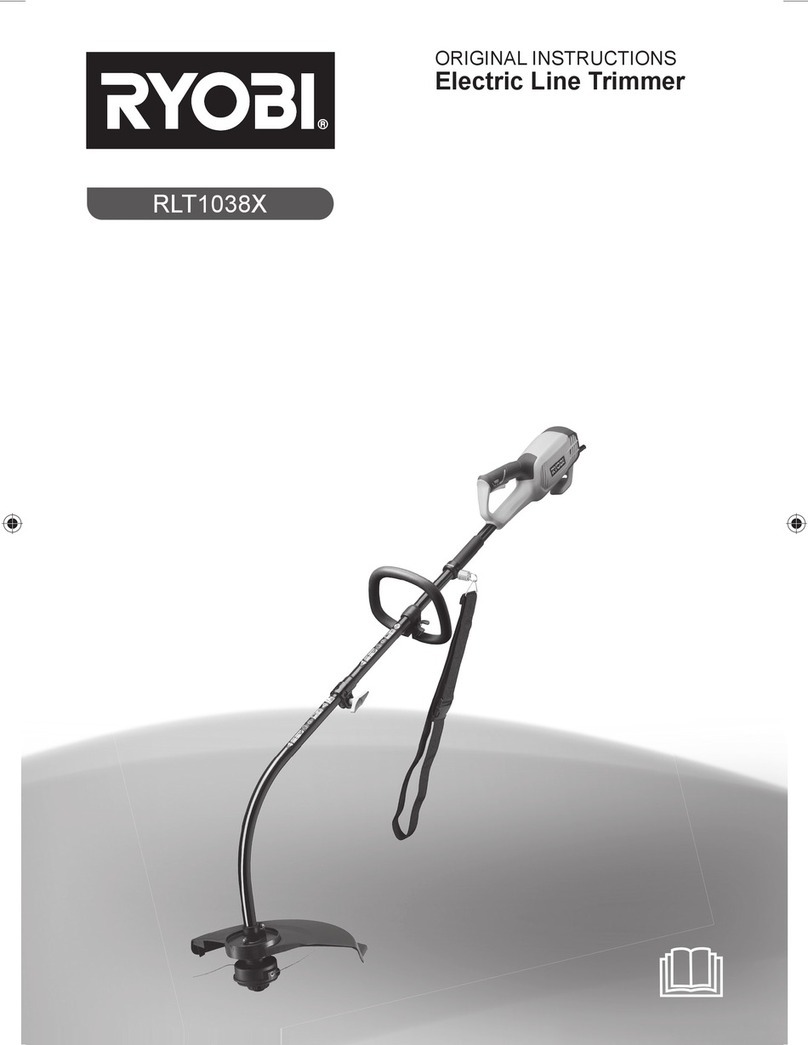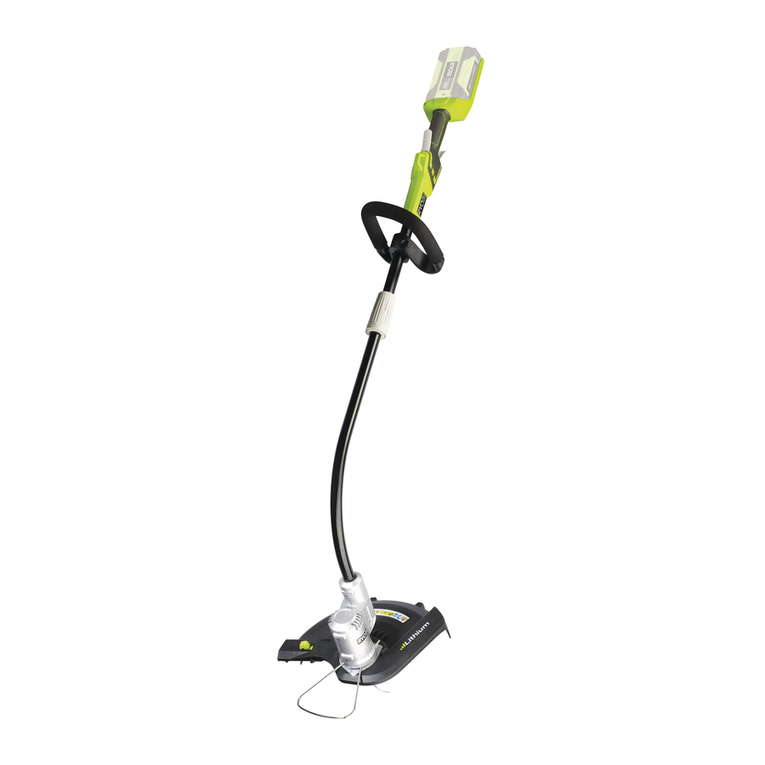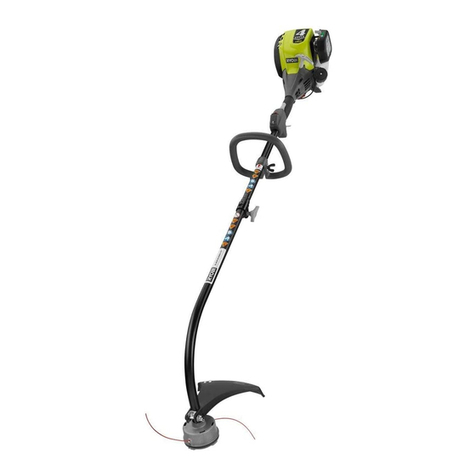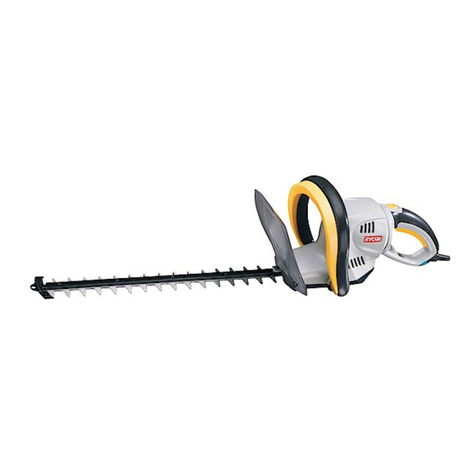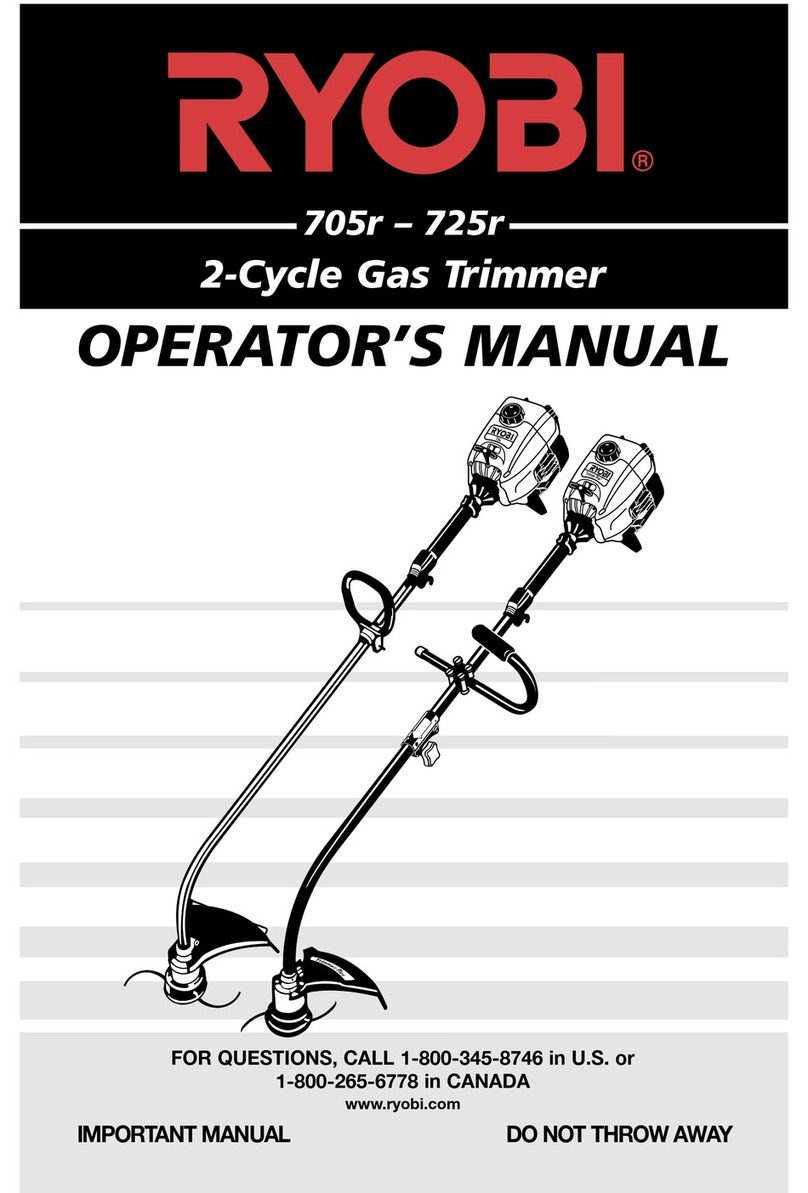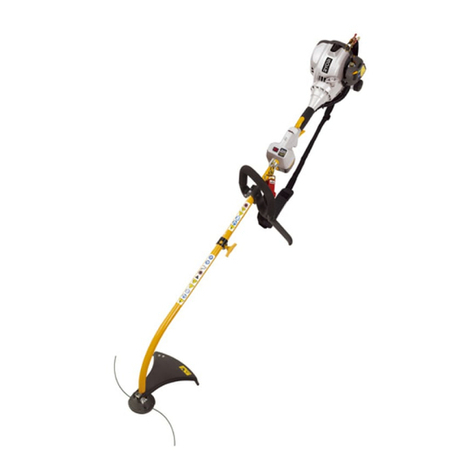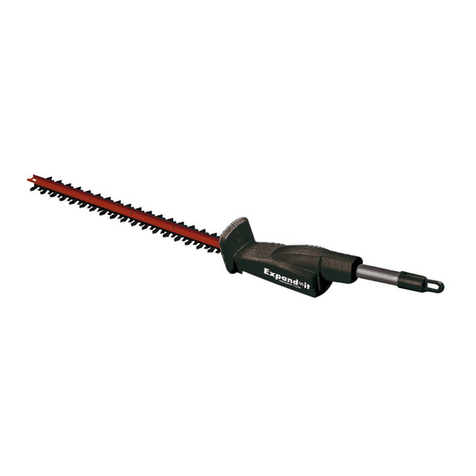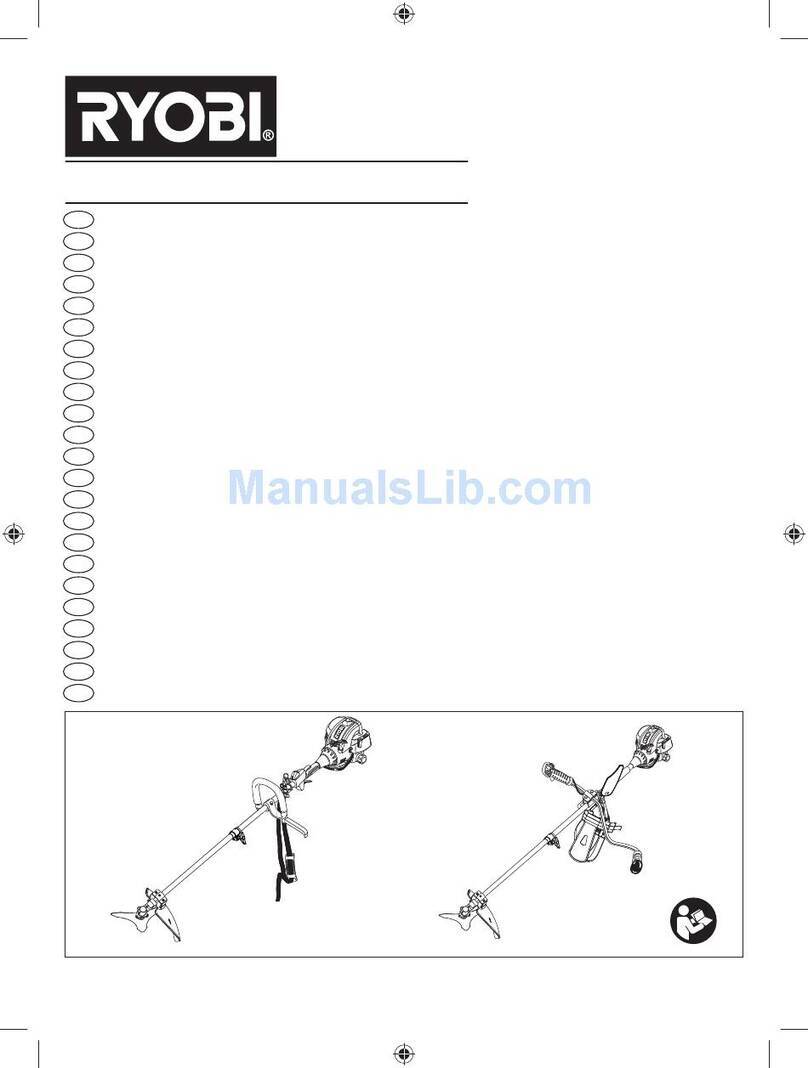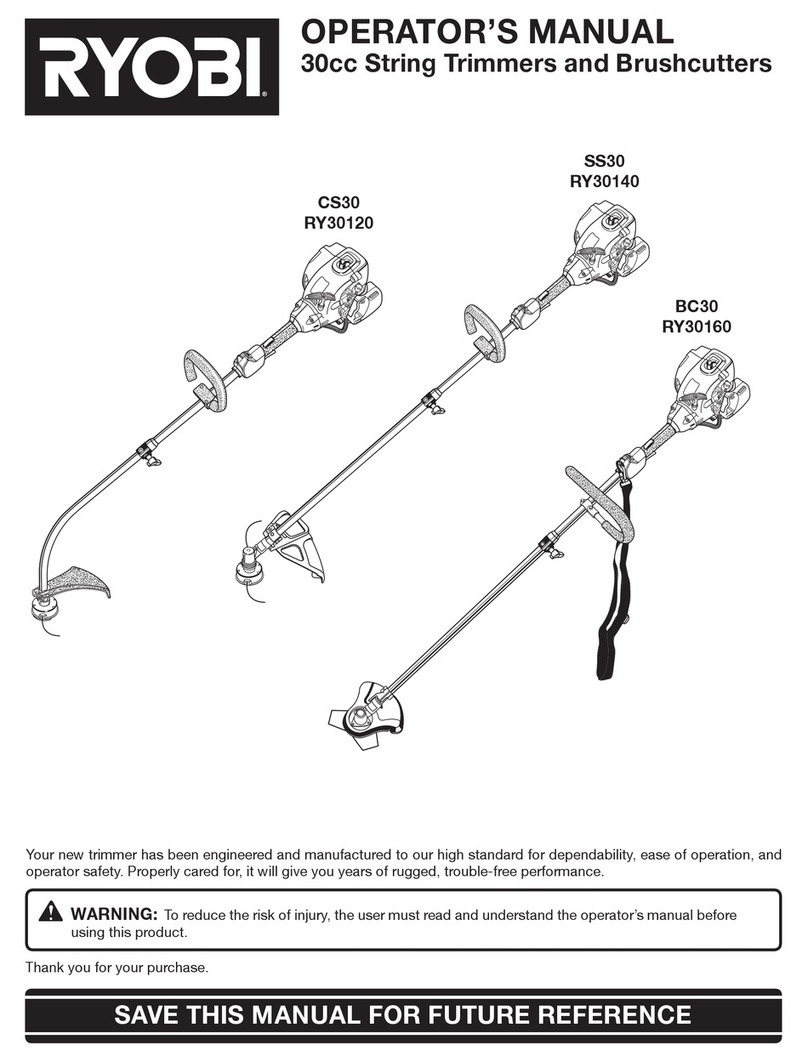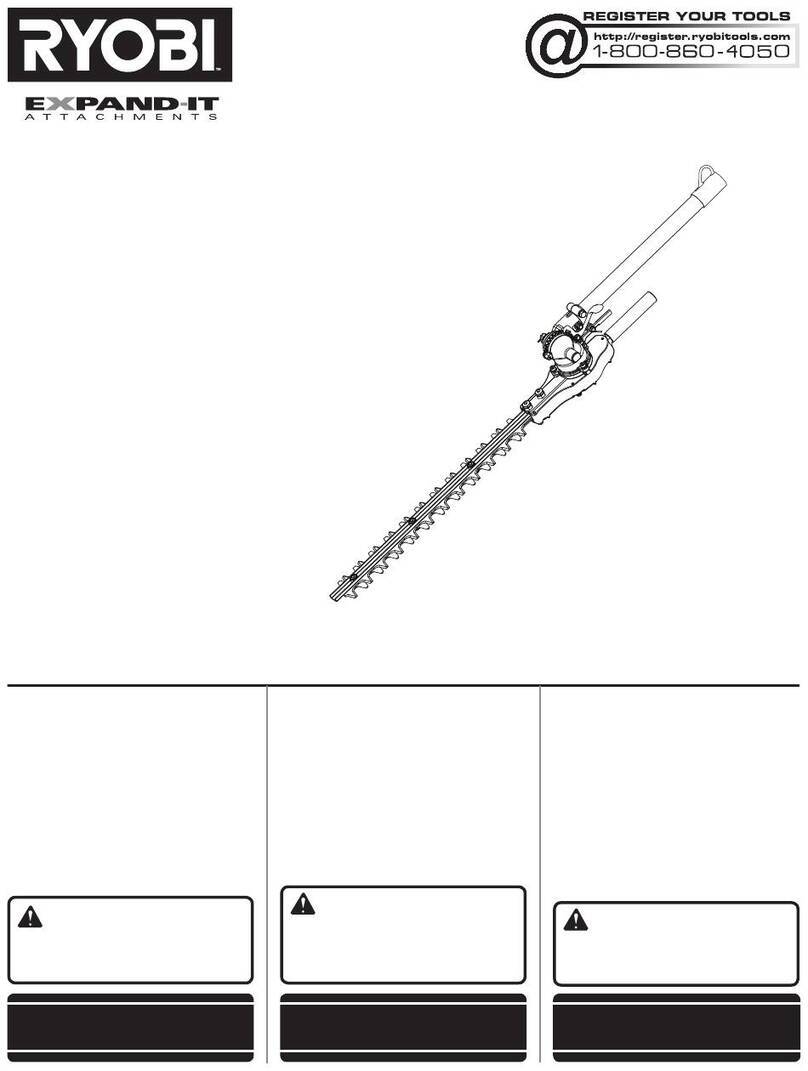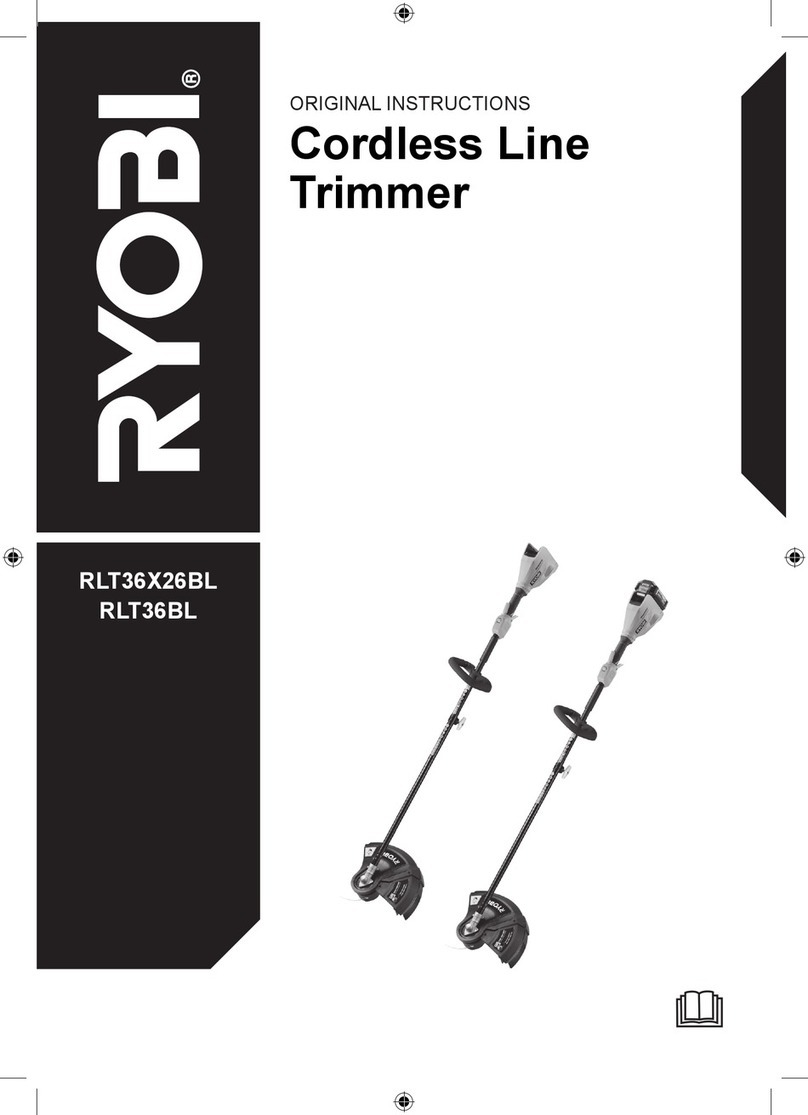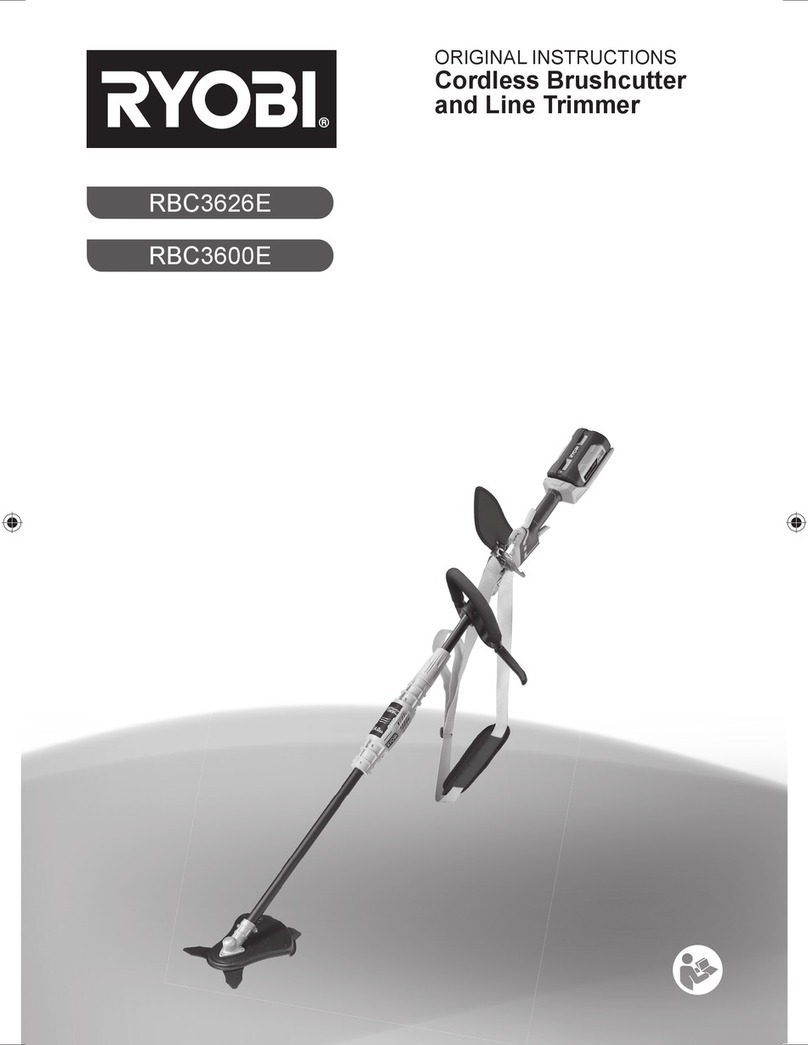
3
■Disconnect the plug from the power source and/
or remove the battery pack, if detachable, from
the power tool before making any adjustments,
changing accessories, or storing power tools. Such
preventive safety measures reduce the risk of starting
the power tool accidentally.
■Store idle power tools out of the reach of children
and do not allow persons unfamiliar with the power
tool or these instructions to operate the power tool.
Power tools are dangerous in the hands of untrained
users.
■Maintain power tools and accessories. Check for
misalignment or binding of moving parts, breakage
of parts and any other condition that may affect the
power tool’s operation. If damaged, have the power
tool repaired before use. Many accidents are caused
by poorly maintained power tools.
■Keep cutting tools sharp and clean. Properly
maintained cutting tools with sharp cutting edges are
less likely to bind and are easier to control.
■Use the power tool, accessories and tool bits etc.
in accordance with these instructions, taking into
account the working conditions and the work to
be performed. Use of the power tool for operations
different from those intended could result in a hazardous
situation.
■Keep handles and grasping surfaces dry, clean
and free from oil and grease. Slippery handles and
grasping surfaces do not allow for safe handling and
control of the tool in unexpected situations.
BATTERY TOOL USE AND CARE
■Recharge only with the charger specified by the
manufacturer. A charger that is suitable for one type
of battery pack may create a risk of fire when used with
another battery pack.
■Use power tools only with specifically designated
battery packs. Use of any other battery packs may
create a risk of injury and fire.
■When battery pack is not in use, keep it away from
other metal objects, like paper clips, coins, keys,
nails, screws or other small metal objects, that can
make a connection from one terminal to another.
Shorting the battery terminals together may cause burns
or a fire.
■Under abusive conditions, liquid may be ejected from
the battery; avoid contact. If contact accidentally
occurs, flush with water. If liquid contacts eyes,
additionally seek medical help. Liquid ejected from
the battery may cause irritation or burns.
■Do not use a battery pack or tool that is damaged or
modified. Damaged or modified batteries may exhibit
unpredictable behaviour resulting in fire, explosion or
risk of injury.
■Do not expose a battery pack or tool to fire or
excessive temperature. Exposure to fire or temperature
above 130°C may cause explosion.
■Follow all charging instructions and do not charge
the battery pack or tool outside the temperature
range specified in the instructions. Charging
improperly or at temperatures outside the specified
range may damage the battery and increase the risk of
fire.
SERVICE
■Have your power tool serviced by a qualified repair
person using only identical replacement parts. This
will ensure that the safety of the power tool is maintained.
■Never service damaged battery packs. Service
of battery packs should only be performed by the
manufacturer or authorized service providers.
POLE HEDGE TRIMMER SAFETY WARNINGS
■Keep all parts of the body away from the blade. Do
not remove cut material or hold material to be cut
when blades are moving. Blades continue to move
after the switch is turned off. A moment of inattention
while operating the hedge trimmer may result in serious
personal injury.
■Carry the hedge trimmer by the handle with the
blade stopped and taking care not to operate any
power switch. Proper carrying of the hedge trimmer will
decrease the risk of inadvertent starting and resultant
personal injury from the blades.
■When transporting or storing the hedge trimmer,
always fit the blade cover. Proper handling of the
hedge trimmer will decrease the risk of personal injury
from the blades.
■When clearing jammed material or servicing the unit,
make sure all power switches are off and the battery
pack is removed or disconnected. Unexpected
actuation of the hedge trimmer while clearing jammed
material or servicing may result in serious personal
injury.
■Hold the hedge trimmer by insulated gripping
surfaces only, because the blade may contact
hidden wiring. Blades contacting a “live” wire may
make exposed metal parts of the hedge trimmer “live”
and could give the operator an electric shock.
■Keep all power cords and cables away from cutting
area. Power cords or cables may be hidden in hedges or
bushes and can be accidentally cut by the blade.
■Do not use the hedge trimmer in bad weather
conditions, especially when there is a risk of
lightning. This decreases the risk of being struck by
lightning.
■To reduce the risk of electrocution, never use the
extended-reach hedge trimmer near any electrical
power lines. Contact with or use near power lines may
cause serious injury or electric shock resulting in death.
■Always use two hands when operating the extended-
reach hedge trimmer. Hold the extended-reach hedge
trimmer with both hands to avoid loss of control.
■Always use head protection when operating the
extended-reach hedge trimmer overhead. Falling
debris can result in serious personal injury.
ADDITIONAL SAFETY WARNINGS
■Some regions have regulations that restrict the use of
the product to some operations. Check with your local
authority for advice. Read all instructions.
■Check the hedges and bushes for foreign objects, such
as wire fences and hidden wiring.
■While operating the product, always hold it firmly with
both hands by the two handles.
